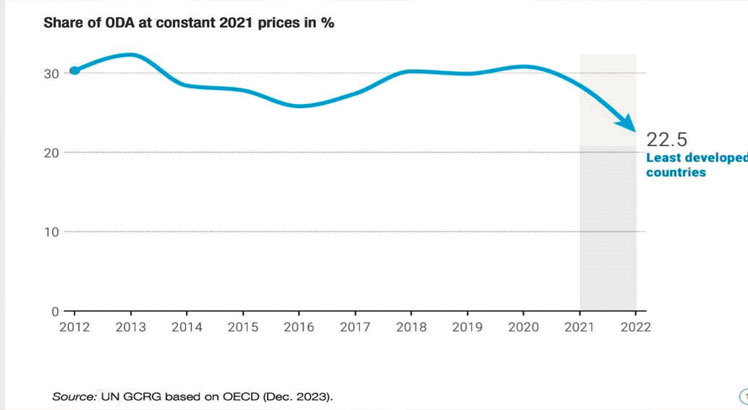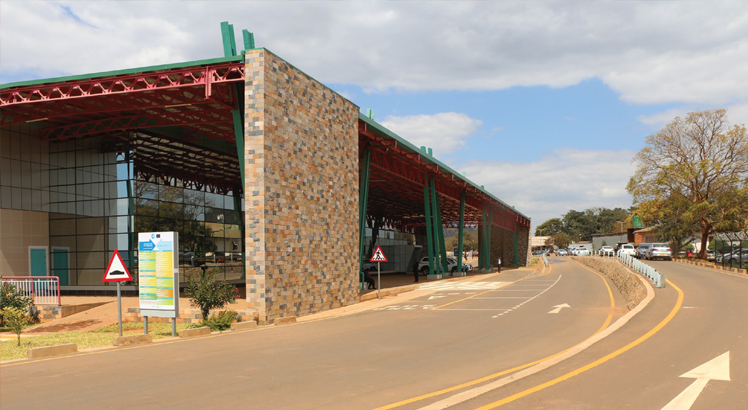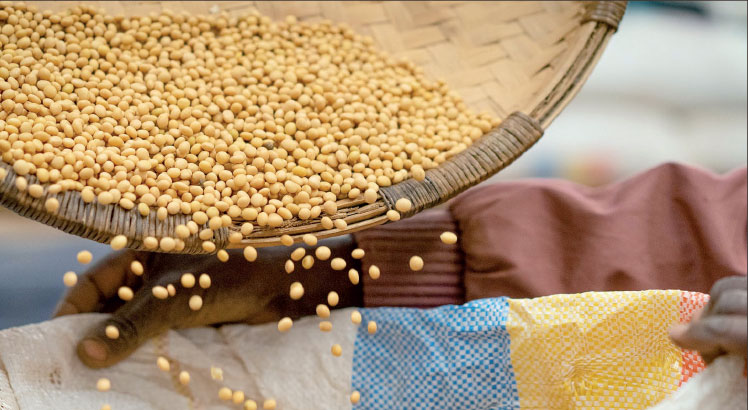AID inflows to LDCs on decline
Development aid inflows to Least Developed Countries (LDCs), including Malawi, is on the decline with more assistance to low-income countries facing structural impediments, the United Nations has said.
Economic experts argue that declining aid to Malawi is an issue of concern as the country is struggling with rising debt service charges and shortage of foreign exchange, which is critical for a net importing economy.
Data from United Nations Conference on Trade and Development (Unctad) shows that aid inflows to LDCs such as Malawi declined by four percent in 2022, falling to $62 billion (K109 trillion).
This followed an eight percent decrease the previous year.

As a result, LDCs share of global official development assistance (ODA) decreased to 22 percent in 2022, the lowest share in over a decade.
At the same time, aid is also being increasingly provided through concessional loans rather than grants, increasing developing countries debt burdens at a time of growing debt distress, according to UN.
For instance, between 2021 and 2022, while ODA grants to developing regions fell by eight percent to $109 billion, loans increased by 11 percent to $61 billion.
Reads the Unctad April 2024 Aid Under Pressure Report: “The world’s poorest countries were not spared from the challenging aid landscape. In 2022, ODA to LDCs declined for the second year in a row.
“This is a much stronger reduction than in other developing countries where aid peaked in 2021 and fell by two percent the following year.”
ODA is touted to improve economic development and welfare for millions of people.
Economist Gilbert Kachamba said in an interview yesterday that Malawi should be concerned about the aid shift, urging authorities to assess the terms and conditions of such loans to ensure they are sustainable and beneficial for the country’s development in the long-run.
He said: “While concession loans may offer immediate financial support, they can also lead to long-term debt burdens and dependency on creditors.
“Additionally, diversifying sources of funding and promoting domestic revenue generation can help mitigate the risks associated with heavy reliance on external financing.”
Mzuzu University economics lecturer Christopher Mbukwa said in an interview yesterday that Malawi has experienced steady flow of ODA and low interest loans for years, but with little to show in terms of economic growth.
But he said ODA has helped with short-term economic imbalances such as bridging the foreign exchange shortages.
He said: “We have economically struggled as a country in spite of growing inflows of ODA.
“Perhaps, it is high time we started to concentrate on raising our domestic revenue generation efforts.”
Malawi’s debt service payments, which include principal and interest, has risen from $54 million (about K95 billion) in 2018 to $101 million (K175 billion) in 2022, according to World Bank data





